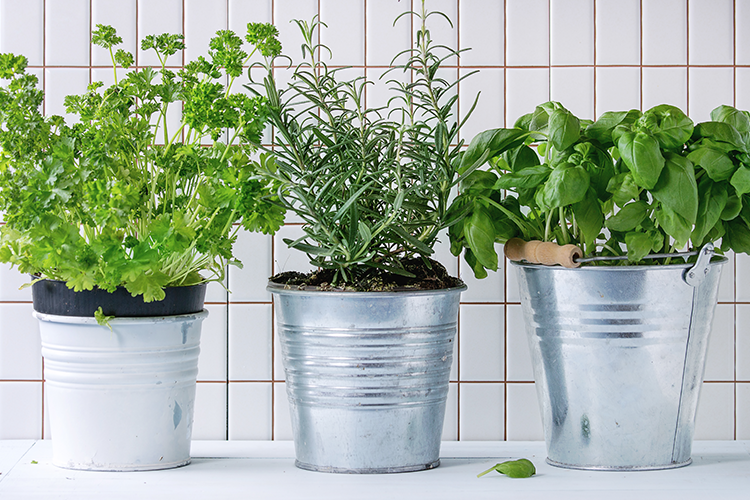Blog
Functional food super hero #4 – Herbs
 Who doesn’t love a garnish? The little sprig of tokenistic green on a pub meal does lighten the look and feel of a plate – but there is some serious nutritional power punch on offer from a culinary herb. For this instalment of our functional food series, we will take a look at why everyone should be adding these greens to every meal.
Who doesn’t love a garnish? The little sprig of tokenistic green on a pub meal does lighten the look and feel of a plate – but there is some serious nutritional power punch on offer from a culinary herb. For this instalment of our functional food series, we will take a look at why everyone should be adding these greens to every meal.
More than a garnish
Herbs, in general, are packed full of antioxidants. Not only that, many have been found to have cancer-fighting properties, be anti-bacterial and anti-microbial, and make everything taste so darn good! (1)
So, before you push the artfully placed piece of green to the side of your dinner plate, here are a few examples of herbs to consider the amazing qualities of, all found at your local supermarket.
Parsley
The most well known of herbs, not only can munching down on a few leaves freshen the breath, it is PACKED full of health-supporting nutrients.
- Parsley is one of the highest vegetable sources of vitamin C. Whoa!
- A ¼ cup will give you over 100% of your recommended intake for vitamin K, much needed for blood clotting and preventing conditions like osteoporosis.
- It is an excellent source of vitamin antioxidants, including vitamin A, beta-carotene, vitamin E, zeaxanthin, lutein, and cryptoxanthin, as well as polyphenol flavonoid antioxidants.
- It contains a vast array of B vitamins and minerals such as calcium and iron, as we as essential oils, such as eugenol, which is being studied for its action in lowering blood sugar levels.
Coriander
You either love it or you hate it. To some people, coriander tastes like soap. To others, it is a taste of Asia!
Coriander is thought to assist in heavy metal detoxification, supporting the liver and digestive tract, and the seeds have been studied for their cholesterol-lowering properties. It is another wonderful source of vitamin K, vitamin A and vitamin C, much like its cousin, parsley. Its fresh fragrance LOVES to accompany flavours found in dishes from Latin America to Asia and the Middle East.
Mint
An all-round-favourite herb for many, mint has been used traditionally for thousands to years to ease digestive ailments, such as indigestion and alleviating symptoms of irritable bowel syndrome.
More recently, mint is being studied for its anti-carcinogenic effects,(1) its activity as an anti-histamine, and for its ability to inhibit the growth of harmful bacteria and fungi. Plus, it is a herb for all things sweet and savoury!
Get your herb nerd on
There are LOADS of other incredible herbs to have fun with, each with their own nourishing and medicinal properties, such as rosemary, oregano, dill, sage, thyme, and basil.
And you needn’t eat buckets of herbs to reap their nutritional benefits. Herbs are so densely concentrated with phytonutrients that a little will go a long way, oo get on board.
Herbs are inexpensive for the amount you use and easy to grow (if that is your thing). Embrace your inner herb nerd, and chop, tear, toss and sprinkle herbs through any meal you can, breakfast, lunch and dinner, to boost the deliciousness of the dish, as well as your health!
Angela Johnson (BHSc Nut. Med)
References:
- Tapsell, LC, Hemphill, I, Cobiac, L, Patch, CS, Sullivan, DR, Fenech, M, Roodenrys, S, Keogh, JB, Clifton, PM, Williams, PG, Fazio, VA, & Inge, KE 2006, ‘Health benefits of herbs and spices: the past, the present, the future’, The Medical Journal Of Australia, vol. 185, no. 4 Suppl, pp. S4-S24.











